6 livestock tech developments to look out for
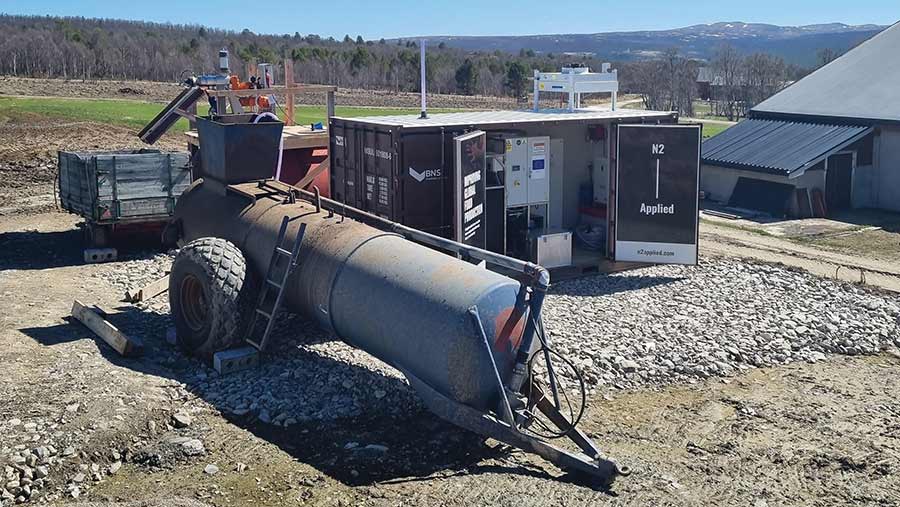 © N2 Applied
© N2 Applied From driverless tractors to cameras for identifying diseases, several high-tech innovations are coming down the track. Farmers Weekly looks at six highlights.
See also: NI farm transforms slurry and food waste into bio-LNG fuel
1. Harnessing lightning to reduce slurry emissions
An on-farm system that uses “lightning” to enhance the nitrogen content of slurry and reduce ammonia and methane emissions by more than 90% will hit the market in early 2024.
N2 Applied uses electricity to create plasma lightning, which splits the nitrogen and oxygen molecules in the air. The nitrogen is then absorbed into liquid slurry.
This lowers the slurry’s pH to 5-6, which helps reduce emissions, explains the company’s UK managing director, Robert Shaw. “With our method, we lock in 99% of methane and 95% of ammonia,” he says.
At the same time, the nitrogen content of the slurry is given a boost.
“We double the total nitrogen content [of slurry], but we increase the available nitrogen for plant growth by four times.”
The process also helps disease control by killing salmonella, E coli and roundworm eggs, he adds.
Key considerations
- The unit is housed in a shipping container with an inlet and outlet for slurry. It needs to be positioned close to where the slurry is produced – for example, by a collection tank
- Size is currently a 50kW plug-and-play unit, suiting herds of about 100-150 cows or 2,000 finisher pigs
- High energy consumption, so more cost-effective on farms with renewable energy
- Larger units and improvements in energy consumption are likely with time
Cost
About £200,000 for the 50kW unit, plus energy costs. Price to be confirmed at launch
2. Gene editing to fast-track genetic gain
Farmers could have access to gene-edited animals and plants within the next five years, thanks to the Genetic Technology (Precision Breeding) Act 2023, which was passed in March.
Gene editing involves inactivating a gene, changing the expression level of a gene, or changing its sequence.
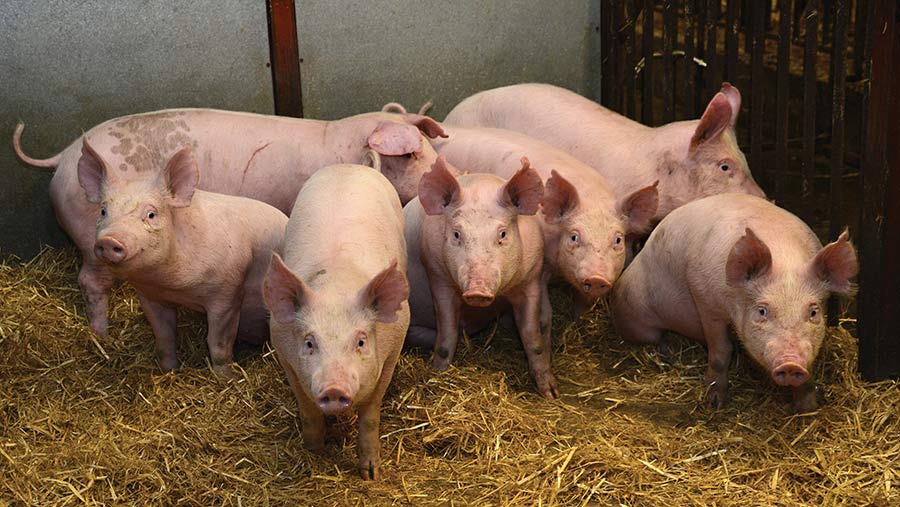
© Norrie Russell
It is seen as a way to speed up selection for traits that are already being bred for conventionally.
The Act does not include genetic modification, where genes from a different animal/species are inserted.
Dr Craig Lewis, chairman of the European Forum of Farm Animal Breeders, says secondary legislation on animal welfare of precision-bred organisms is needed before the Act can be deployed, but he believes this should be in place by 2026.
Pigs that have been gene edited for resistance to porcine reproductive and respiratory syndrome (PRRS) are likely to come to market in England first, thanks to development by the Roslin Institute and Genus.
The gene edit should help cut disease incidence, boost feed efficiency and animal welfare, as well as lowering antibiotics use.
Farmers are likely to access gene-edited animals by buying semen from edited boars, or females that are granddaughters of gene-edited animals.
Gene editing could also play a role in plant selection. Dr Dylan Phillips, lecturer in genetics at Aberystwyth University, says it could shorten the breeding cycle for grass varieties from about 10-15 years to five to eight years.
Key considerations
- The Genetic Technology (Precision Breeding) Act 2023 is only applicable in England, which means farmers from devolved nations will not be able to use the technology
- However, English produce – for example, milk and grain – from a gene-edited organism can be sold throughout, via the UK Internal Market Act 2020
- Public perception will need to be tackled, along with getting buy-in from the food chain and export markets
Cost
To be confirmed once commercialised
3. Using cameras to detect disease and monitor animals
Augmented reality (AR) allows the user to walk around a herd and see information about the cow in view pop up on a wearable heads-up display.
An Innovate UK-funded project, involving Agri-EPI, Vet Partners and Abertay University, looked at the application of video game technology, or AR, in farming systems.
They found it was possible to develop an artificial intelligence system that identified a cow by its skin pattern.
It was also able to collate information from multiple sources, such as milk records and parlour software, and display it on a headset in the user’s field of vision to correspond with the cow being looked at.
Dutch company Nedap Livestock Management has also developed a headset that links to their cow management system.
Cow information will appear on the headset as a hologram over a picture of the animal being viewed.
Information and actions can be entered using hand gestures and voice commands. The system has yet to be commercialised.
AgriEpi dairy projects specialist Duncan Forbes says camera recognition could eventually revolutionise cow identification.
“I think in 10 years’ time, cows won’t be wearing hardwear [tags], it will all be done with camera technology, remotely,” he says.
Key considerations
- Developing a headset that is robust enough to work in a farm setting has been challenging
- AR may be more appropriate for vets, who are used to using heads-up displays for pregnancy diagnosis
Cost
Not known, as it is yet to be commercialised
Hoofcount
Hoofcount has developed a system that uses a camera mounted on the end of a foot-bath to identify and score digital dermatitis (DD) lesions. The PediVue system will come to market in 2024.
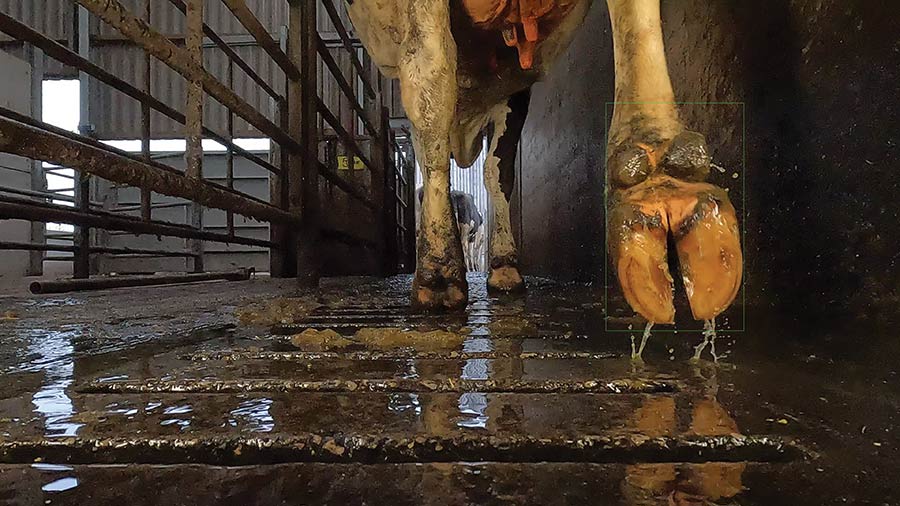
© Hoofcount
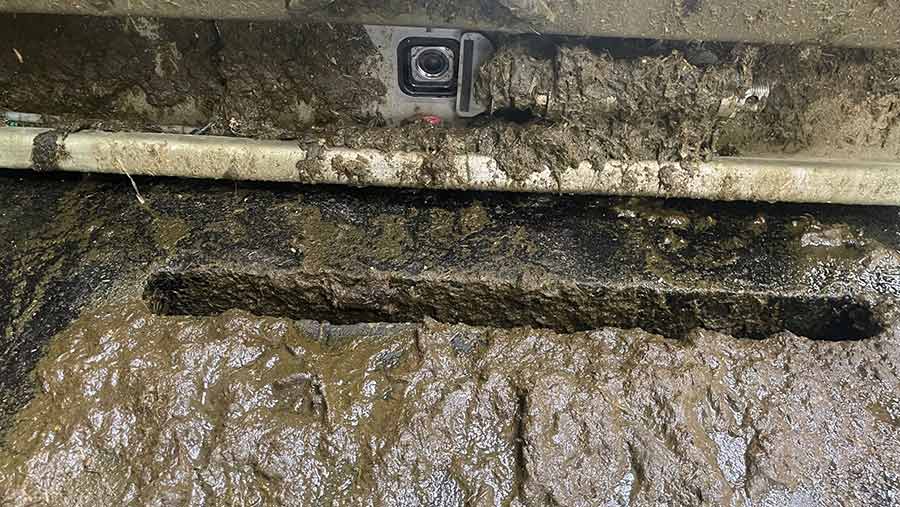
© Hoofcount
It uses machine learning and artificial intelligence to detect and identify each hoof and identify lesions using the recognised DD scoring system of M1 to M4.
It should allow signs to be picked up and addressed early, preventing issues from escalating.
Key considerations
- Can only be used with a Hoofcount foot-bath
Cost
To be confirmed, but likely to be on a cow-a-month basis, plus installation costs
4. High-tech grassland management for mainstream use
Over time, the cost and accuracy of high-tech grass management equipment will improve and it will be used by more farmers, according to Dr Cennydd Jones, lecturer in agricultural grassland management at Aberystwyth University.
“At the moment, these collars and [artificial intelligence] systems are quite expensive, but in a few years they’re going to become more affordable to more farmers,” he says.

© Chris Knight
For instance, “no-fence” collars are a grass management tool designed to deliver a pulse or sound when the animal approaches a virtual fence as mapped out on the grazing platform via GPS.
Satellites for grass growth monitoring use cameras or near-infrared technology to establish grass cover.
The main challenge with this technology is that these devices do not work when there is cloud cover, explains Chris Knight, founder of Agribot.
The Grasslands Modelling for Improved Utilisation Project, managed by AgriEpi with Innovate UK grant funding, has been looking at the use of synthetic aperture radar (SAR) to measure and predict grass growth.
SAR uses a radar beam that can penetrate clouds and, as the beam bounces back off the ground, it can indicate crop cover.
The system mixes real-time data with climate models to deliver a minimum two-week grass growth forecast and long-range weather forecast.
This will likely become commercialised in the UK by Agribot in 2024.
Key considerations
- Images from SAR can be difficult to interpret
- The aim is to sell the information generated into existing grass management apps
- Farmers will have to generate their own grazing wedge
Cost
The cost of the Agribot system is to be confirmed, but will likely start at about £10-£15/ha a year.
5. Measuring methane using rumen boluses
In the next 12 months, it is likely that some rumen boluses that include a microphone to listen to rumination will also monitor methane levels.
Vet and Raft Solutions chief executive Jonathan Statham says this will assist in “precision feeding the cow”.
“You can get a better understanding of how an individual cow’s microbiome is responding to how it’s being fed every day, and then fine-tune the diet using new ways to analyse combinations of sensors,” he explains.
Jonathan believes methane monitors will enable farmers to cost-effectively establish the need for a methane-reducing feed supplement and the ability to track the cow’s response.
Key considerations
- Recording dietary methane emissions could be useful as milk buyers ask for more information and evidence of how a farm’s carbon footprint is being reduced
- Boluses cannot be reused
Cost
To be confirmed
6. Driverless forage harvesting
Having silage harvested by contractors using autonomous vehicles could be a reality in the next 18 months, according to Will Mumford, owner of ASC Autonomy.
Driverless vehicles are already on the market, with most of the big machinery companies in the process of developing models.
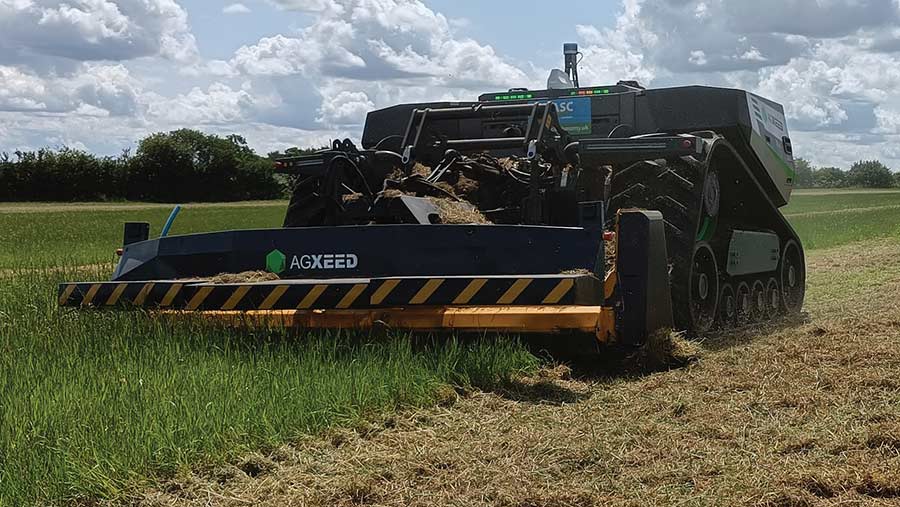
© Andrew Williams
In the early days of development, size and cost likely make them more attractive to contractors or large farms, rather than average livestock producers.
“It will fit into livestock, there’s no question. [It] is more how, rather than if,” says Will.
He envisages contractors offering a “robotic service”, with autonomous vehicles mowing while conventional machinery might be used to rake or row up, for example.
ASC Autonomy’s AgBot can be attached to any conventional field implement, such as a plough, drill or fertiliser spreader, and programmed to automatically navigate a field.
Key considerations
- The smallest size is a 3t, 75hp, diesel/electric hybrid
- Could reduce compaction risk due to lighter weight compared with a tractor
- In theory, contractors should be able to offer a robotic service at a competitive price due to reduced operating costs
- Can work up to 24 hours a day
- Removes operator error and could potentially aid farm safety
- Not allowed on public highways
- Not yet able to drive a specific path, such as for feeding out or scraping
Cost
£170,000-£320,000 depending on size
